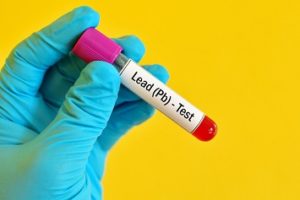Twelve federal agencies, including the Department of Labor, are participating in the President’s Task Force on Environmental Health Risks to Children. The Task Force is currently developing a draft strategy on reducing childhood lead exposure. On February 16, 2018, several cabinet heads met to outline the draft strategy. Since childhood lead exposure can occur when a worker who is exposed to it on the job unknowingly carries it home to his or her family, OSHA will play a significant role in the task force.
Occupations where lead exposure occurs are too numerous to list but include plumbing, metal production, painting, demolition, soldering, and building renovation. Those sectors alone employ millions of workers, many of whom have the potential to raise airborne lead levels in domestic settings with children and pregnant women.
A Threat to Adults, Also
Lead is one of the most common and toxic environmental contaminants affecting children and particularly children under the age of 6 and human fetuses. Low levels of lead in the blood may cause learning and behavioral problems in children under the age of 6. Higher levels (anything over 30 micrograms of lead per deciliter of blood [µg/dL]) pose risks to adults that include damage to the brain, nervous system, blood, and kidneys.
Priority Objective
At the Task Force meeting, attendees agreed to:
- Make addressing childhood lead exposure a priority for Task Force departments and agencies.
- Establish five goals that frame the new strategy.
- Set an aggressive, near-term timeline for the Task Force to complete its work to draft the strategy.
- Schedule a follow-up meeting or event to issue the federal strategy and discuss next steps.
OSHA’s Standards
OSHA has promulgated standards for lead exposure in general industry (29 CFR 1910.1025), construction (29 CFR 1926.62), and shipyard employment (29 CFR 1915.1025). The OSHA-permissible exposure limit (PEL) for lead is 50 micrograms per cubic meter (µg/m3) averaged over an 8-hour period.
OSHA notes that its current lead standards were established before the recent emergence of new information on adverse health effects from low-level lead exposure. The standards allow for the return of an employee from medical removal to their former job when the employee’s blood lead level is below 40 micrograms per deciliter (µg/dL). But in response to medical findings that lower blood lead levels can result in adverse health effects, OSHA announced in 2016 that it was exploring regulatory options to lower blood lead levels in affected workers. We will need to see if that regulatory possibility will be included in the draft strategy.
Requirements and Safe Practices
While the work of the task force continues, employees and employers can take simple steps to reduce lead exposure.
By law, employers must:
- Test workplace air for lead and blood lead levels in workers.
- Tell employees if their work involves lead, and train them on lead safety.
- Control lead dust and fumes in the workplace.
- Provide protective work clothing and equipment for workers.
- Give workers a place to wash hands and take a shower.
- Provide workers a place to change into clean clothes. Keep work clothes away from street clothes.
Employees should:
- Wash hands often, and shower at the end of the work shift.
- Change out of work clothes and shoes before going home.
- Avoid taking contaminated work clothing or shoes exposed to lead home. If clothing or shoes must be brought home, put them in a plastic bag and wash work clothes separately.
- Tell their doctors that they work with lead.

